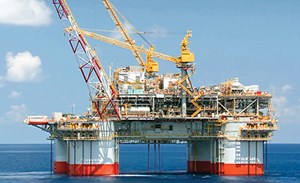One of the favorite pastimes of historians and journalists, and now the internet polls, is the compilation of the Wonders of the World. The list for the ancient world includes the pyramids of Giza, Mausoleum of Halicarnassus, Temple of Artemis at Ephesus, Hanging Gardens of Babylon, statue of Zeus at Olympia, Colossus of Rhodes, and the Pharos (Lighthouse) of Alexandria. The pyramids of Giza are the only survivors, and they are truly, monumental edifices.
A list of wonders from the Middle Ages includes the Great Wall of China, Stonehenge, city of Petra in Jordan, Porcelain Tower of Nanjing, Machu Picchu in Peru, Rome’s Colosseum, India’s Taj Mahal. A list of the wonders of the early industrial world includes the SS Great Eastern, Bell Rock lighthouse offshore Scotland, Brooklyn Bridge, London sewerage system, the U.S. Transcontinental railroad, Panama Canal and the Hoover dam. Similar lists could be compiled for travel (automobiles, airplanes, rockets and space shuttles) and communications (newspapers, radio, TV and the internet).

Taking a break from crude oil price discussion and environmental policy issues, I would like to recognize the great wonders of the world developed by the oil and gas industry. Such a list could include Ghawar field in Saudi Arabia, North Sea installations, Alaska’s North Slope and the Trans-Alaska pipeline (would the environmentalists have allowed us to build it now?), the Sakhalin-I and Sakhalin-II projects, subsalt fields in the Gulf of Mexico and presalt fields offshore Brazil, and the ongoing North American shale revolution.
Let’s also acknowledge the extraordinary Lower Tertiary deepwater developments in the Gulf of Mexico, the latest wonders of the world. Following the successes of Shell’s Perdido (120 Mbopd) and Petrobras’ Cascade (40 Mbopd) is Chevron’s Jack/St Malo (JSM) field, which produced first oil on Dec. 1, 2014. JSM is now producing 70 Mbopd.
According to Chevron, the Jack/St Malo Tension Leg Platform (TLP) sits in 7,000 ft of water, with reservoirs beginning at 19,500 ft beneath the seabed. The TLP displaces water at the equivalent of 37 fully loaded 747s. To top it all, the field infrastructure is nearly as wide as the state of Rhode Island.
The Lower Tertiary successes are the culmination of numerous technology developments in all phases of exploration, drilling and production. First of all, it was necessary to develop high-resolution depth imaging to image formations below the salt. Then, rotary steerable drilling was required to drill precisely through the salt. The wells have to be drilled in water depths down to 8,000 ft, and each well extends to 26,000 ft to 36,000 ft. To drill, complete and produce these wells, it required evolutionary improvements in drill bits, mud systems and completion systems. When these wells will need artificial lift, subsea boosting pumps will provide the necessary lift.
My neat thesis about the wonder of the deepwater Gulf of Mexico projects took a hit in early June, when Chevron, itself, had to move its Big Foot TLP to sheltered waters after accidental damage to the subsea installation tendons. Just goes to show the tremendous progress we’ve made, and why we still have ways to go. ![]()

- Advancing offshore decarbonization through electrification of FPSOs (March 2024)
- Subsea technology- Corrosion monitoring: From failure to success (February 2024)
- Prices and governmental policies combine to stymie Canadian upstream growth (February 2024)
- U.S. producing gas wells increase despite low prices (February 2024)
- U.S. drilling: More of the same expected (February 2024)
- U.S. oil and natural gas production hits record highs (February 2024)
- Applying ultra-deep LWD resistivity technology successfully in a SAGD operation (May 2019)
- Adoption of wireless intelligent completions advances (May 2019)
- Majors double down as takeaway crunch eases (April 2019)
- What’s new in well logging and formation evaluation (April 2019)
- Qualification of a 20,000-psi subsea BOP: A collaborative approach (February 2019)
- ConocoPhillips’ Greg Leveille sees rapid trajectory of technical advancement continuing (February 2019)


